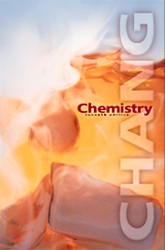|
 |  Chemistry, 7/e Raymond Chang,
Williams College
Periodic Relationships Among the Elements
Internet ExercisesWebElements' chart
(http://www.shef.ac.uk/~chem/web-elements/)
- Chemists are able to predict certain physical properties of a particular element simply by locating it on the periodic chart. Using the WebElements' chart at http://www.shef.ac.uk/~chem/web-elements/, answer the following:
- What is the ground state electron configuration for silver?
- What is the atomic radius of Mn?
- Ca2+ is isoelectronic with what?
- Which has the larger radius, Cl- or K+ ?
- Why are the noble gases also referred to as the inert gases?
|
 |  |  | http://www.chem.msu.su/eng/misc/mendeleev/welcome.html
(http://www.chem.msu.su/eng/misc/mendeleev/welcome.html)
- Most of us are quite familiar with the periodic table, proposed by Dmitri Mendeleev and Lothar Meyer in 1869. The site at http://www.chem.msu.su/eng/misc/mendeleev/welcome.htmlgives a comprehensive and detailed history of Mendeleev, some of which is in Russian. His work on the periodic classification of the elements has been regarded by many as the most significant achievement in chemistry in the nineteenth century. After reading his biography at various links within this site, answer the following:
- What key thoughts, presented by the most important people in his life, guided Mendeleev through his early years?
- According to many stories concerning his later years, what aspect of Mendeleev's physical appearance did he allow to become less significant?
- It states in the text that Mendeleev was one of the first modern-day scientists who did not rely solely on his own work. What did he choose to do instead?
- What predictions did he make that were scoffed at by the science world?
|
 |  |  | ThinkQuest
(http://library.thinkquest.org/2690/ptable/ptable.html)
- Another periodic table is provided by ThinkQuest. Go to http://library.thinkquest.org/2690/ptable/ptable.html, and answer the following:
- Why does atomic radius decrease from the left to the right? (Hint: Look at "covalent radius" under each element.
- Why does the radius decrease from top to bottom?
- Why are the halogens highly reactive?
- After removing an electron from a neutral atom, why is the subsequent ionization energy higher than the initial?
- What group has the highest ionization energy and why?
|
|
|



 2002 McGraw-Hill Higher Education
2002 McGraw-Hill Higher Education